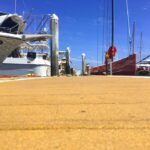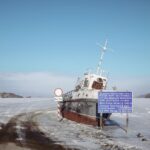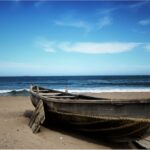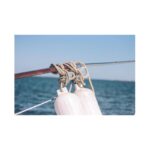The new Year is here and soon we will find ourselves enjoying the Spring and for many boaters, annual preparation and cleaning projects are necessary rites of Spring that help prevent problems that could keep them off the water once the season is underway. We hope this tips help you.
FUEL SYSTEM
Inspect the fuel system for leaks or damage and be sure to pay special attention to fuel hoses, connections and tank surfaces.
Evidence of a damaged fuel hose includes softness, brittleness or cracking.
Replace components when necessary and verify all fittings and clamps are properly secured.
Ensure the engine, exhaust and ventilation systems are all functioning properly.
Look before you pump. Don’t fill your tank with fuel that contains more than 10% ethanol (E10) as it will damage your engine
BELTS, CABLES & HOSES
Check belts, cables and hoses because they can become brittle and may crack during winter storage.
Belts should fit tightly around pulleys to prevent slipping.
A worn belt may leave a black residue near the pulley and will fit loosely.
Cracks or swells on the outer jacket of throttle, shift and steering control cables may be of internal corrosion and immanent failure
ELECTRIC SYSTEM
Inspect all electrical connections for clean, tight, corrosion free connections. Corroded connections can be dangerous
Remove corroded terminals and use a wire brush to clean them, along with all cable ends.
Charge your battery and have it tested to ensure it can hold a charge.
Electrical systems should be regularly inspected by a qualified technician.
FLUID LEVELS
Check all fluid levels including engine oil, power steering, power trim reservoirs and coolant.
Be sure to change the engine oil, oil filter and drive lubricants if these tasks were not done prior to winterizing your boat.
PROPELLERS & HULLS
Inspect propellers for dings, pitting, cracks and distortion.
Damaged propellers can cause unwanted vibration and damage to your drive train.
Make sure the propeller is secured properly, and replace bearings when needed.
When inspecting the hull, look for blisters, distortions and cracks. Be sure to clean the hull, deck, and topsides using an environmentally safe cleaning solution.
Also, make sure the drain plug is securely in place before every launch.
SAFETY GEAR
Check your life jackets to ensure they are in good condition and that there are enough on board for all potential passengers.
Ensure that each individual has the correct size life jacket for their body weight.
Be sure all onboard fire extinguishers are the correct class for your vessel, and are fully charged and stowed in the proper place.
For any enclosed or semi-enclosed area, ensure you have at least one properly installed and working carbon monoxide detector
Consider an EPIRB for situations of distress to ensure you can be found
Take advantage of any safety inspections offered by the US Coast Guard (USCG), USCG Auxiliary or US Power Squadrons.
Wishing you a great season and year to come of carefree boating.





